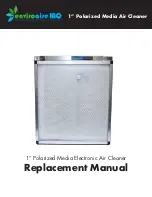
En-6
(1) Detach the caps and plugs from the pipes.
(2) Center the pipe against the port on the outdoor unit, and then turn the flare nut by
hand.
To prevent gas leakage, coat the flare
surface with alkylbenzene oil (HAB).
Do not use mineral oil.
(3) Tighten the flare nut of the connection pipe at the outdoor unit valve connector.
3-way valve
(Liquid)
Flare nut
Connection pipe
(Liquid)
3-way valve
(Gas)
Flare nut
Connection pipe
(Gas)
(4) When the flare nut is tightened properly by your hand, use a torque wrench to
finally tighten it.
Torque wrench
Holding spanner
Body side
CAUTION
Hold the torque wrench at its grip, keeping it in a right angle with the pipe, in order to
tighten the flare nut correctly.
Flare nut [mm (in.)]
Tightening torque [N·m (kgf·cm)]
9.52 (3/8) dia.
32 to 42 (320 to 420)
15.88 (5/8) dia.
63 to 75 (630 to 750)
5.3. Sealing test
WARNING
Before operating the compressor, install the pipes and securely connect them. Otherwise,
if the pipes are not installed and if the valves are open when the compressor operates, air
could enter the refrigeration cycle. If this happens, the pressure in the refrigeration cycle will
become abnormally high and cause damage or injury.
After the installation, make sure there is no refrigerant leakage. If the refrigerant leaks
into the room and becomes exposed to a source of fire such as a fan heater, stove, or
burner, it produces a toxic gas.
Do not subject the pipes to strong shocks during the sealing test. It can rupture the
pipes and cause serious injury.
CAUTION
Do not block the walls and the ceiling until the sealing test and the charging of the
refrigerant gas have been completed.
For maintenance purposes, do not bury the piping of the outdoor unit.
After connecting the pipes, perform a sealing test.
•
Make sure that the 3-way valves are closed before performing a sealing test.
•
Pressurize nitrogen gas to 4.15 MPa to perform the sealing test.
•
Add nitrogen gas to both the liquid pipes and the gas pipes.
•
Check all flare connections and welds. Then, check that the pressure has not
•
decreased.
Compare the pressures after pressurizing and letting it stand for 24 hours, and check
•
that the pressure has not decreased.
* When the outdoor air temperature changes 5 °C, the test pressure changes
0.05 MPa. If the pressure has dropped, the pipe joints may be leaking.
If a leak is found, immediately repair it and perform the sealing test again.
•
After completing the sealing test, release the nitrogen gas from both valves.
•
Release the nitrogen gas slowly.
•
5.4. Vacuum process
CAUTION
Perform a refrigerant leakage test (air tightness test) to check for leaks using nitrogen
gas while all valves in the outdoor unit are closed. (Use the test pressure indicated on
the nameplate.)
Be sure to evacuate the refrigerant system using a vacuum pump.
The refrigerant pressure may sometimes not rise when a closed valve is opened after
the system is evacuated using a vacuum pump. This is caused by the closure of the
refrigerant system of the outdoor unit by the electronic expansion valve. This will not
affect the operation of the unit.
If the system is not evacuated sufficiently, its performance will drop.
Use a clean gauge manifold and charging hose that were designed specifically for use
with R410A. Using the same vacuum equipment for different refrigerants may damage
the vacuum pump or the unit.
Do not purge the air with refrigerants, but use a vacuum pump to evacuate the system.
(1) Remove the cap, and connect the gauge manifold and the vacuum pump to the
charging valve by the service hoses.
(2) Vacuum the indoor unit and the connecting pipes until the pressure gauge indicates
–0.1 MPa (–76 cmHg).
(3) When –0.1 MPa (–76 cmHg) is reached, operate the vacuum pump for at least
60 minutes.
(4) Disconnect the service hoses and fit the cap to the charging valve to the specified
torque.
(5) Remove the blank caps, and fully open the spindles of the 2-way and 3-way
valves with a hexagon wrench [Torque: 6~7 N·m (60 to 70 kgf·cm)].
(6) Tighten the blank caps of the 2-way valve and 3-way valve to the specified torque.
Tightening torque
Blank cap
9.52 mm (3/8 in.)
20 to 25 N·m (200 to 250 kgf·cm)
15.88 mm (5/8 in.)
30 to 35 N·m (300 to 350 kgf·cm)
Charging port cap
10 to 12 N·m (100 to 120 kgf·cm)
Connecting pipe
Blank cap
Hexagon wrench
3-way valve
Charging port
Cap
Service hose
with valve core
Outdoor unit
Use a 4 mm
hexagon wrench.
Lo
Hi
Gauge manifold
Service hose
Vacuum pump
CAUTION
Use a clean gauge manifold
and charging hose for R410A
exclusively.
9374995295_IM.indb 6
22/1/2556 16:12:21





























